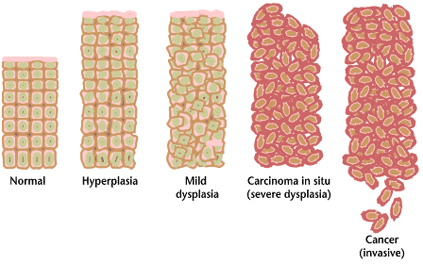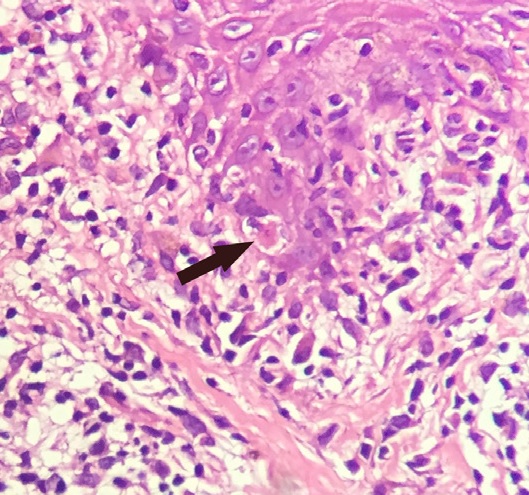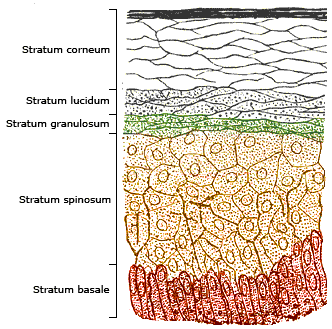|
Keratosis
Keratosis (from '' kerat-'' + '' -osis'') is a growth of keratin on the skin or on mucous membranes stemming from keratinocytes, the prominent cell type in the epidermis. More specifically, it can refer to: * actinic keratosis (also known as solar keratosis), a premalignant condition * chronic scar keratosis * hydrocarbon keratosis * keratosis pilaris (KP, also known as follicular keratosis) * seborrheic keratosis, ''not'' premalignant See also * Folliculitis * Keratoderma Keratoderma is a hornlike skin condition. Classification The keratodermas are classified into the following subgroups:Freedberg, et al. (2003). ''Fitzpatrick's Dermatology in General Medicine''. (6th ed.). McGraw-Hill. . Congenital * Simple kera ... References External links Dermatologic terminology {{cutaneous-condition-stub ... [...More Info...] [...Related Items...] OR: [Wikipedia] [Google] [Baidu] |
Actinic Keratosis
Actinic keratosis (AK), sometimes called solar keratosis or senile keratosis, is a Premalignant condition, pre-cancerous area of thick, scaly, or crusty skin.Freedberg, et al. (2003). ''Fitzpatrick's Dermatology in General Medicine''. (6th ed.). McGraw-Hill. . Actinic keratosis is a disorder (''wiktionary:-osis, -osis'') of Epidermis, epidermal keratinocytes that is induced by Ultraviolet, ultraviolet (UV) light exposure (''wiktionary:actin-, actin-''). These growths are more common in Light skin, fair-skinned people and those who are frequently in the sun. They are believed to form when skin gets damaged by UV radiation from the sun or indoor tanning beds, usually over the course of decades. Given their pre-cancerous nature, if left untreated, they may turn into a type of skin cancer called Squamous cell skin cancer, squamous cell carcinoma. Untreated lesions have up to a 20% risk of progression to squamous cell carcinoma, so treatment by a dermatologist is recommended. Actin ... [...More Info...] [...Related Items...] OR: [Wikipedia] [Google] [Baidu] |
Seborrheic Keratosis
A seborrheic keratosis is a non-cancerous ( benign) skin tumour that originates from cells, namely keratinocytes, in the outer layer of the skin called the epidermis. Like liver spots, seborrheic keratoses are seen more often as people age. The tumours (also called lesions) appear in various colours, from light tan to black. They are round or oval, feel flat or slightly elevated, like the scab from a healing wound, and range in size from very small to more than across. They are often associated with other skin conditions, including basal cell carcinoma. Sometimes, seborrheic keratosis and basal cell carcinoma occur at the same location. At clinical examination, a differential diagnosis considers warts and melanomas. Because only the top layers of the epidermis are involved, seborrheic keratoses are often described as having a "pasted-on" appearance. Some dermatologists refer to seborrheic keratoses as "seborrheic warts", because they resemble warts, but strictly speaking, ... [...More Info...] [...Related Items...] OR: [Wikipedia] [Google] [Baidu] |
Keratosis Pilaris
Keratosis pilaris (KP; also follicular keratosis, lichen pilaris, or colloquially chicken skin.) is a common, autosomal- dominant, genetic condition of the skin's hair follicles characterized by the appearance of possibly itchy, small, gooseflesh-like bumps, with varying degrees of reddening or inflammation. It most often appears on the outer sides of the upper arms (the forearms can also be affected), thighs, face, back, and buttocks; KP can also occur on the hands, and tops of legs, sides, or any body part except glabrous (hairless) skin (like the palms or soles of feet). Often the lesions can appear on the face, which may be mistaken for acne or folliculitis. The several types of KP have been associated with pregnancy, type 1 diabetes mellitus, obesity, dry skin, allergic diseases (e.g., atopic dermatitis), and rarely cancer. Many rarer types of the disorder are part of inherited genetic syndromes. The cause of KP is not completely understood. As of 2018, KP is thou ... [...More Info...] [...Related Items...] OR: [Wikipedia] [Google] [Baidu] |
Precancerous Condition
A precancerous condition is a condition, tumor or lesion involving abnormal cells which are associated with an increased risk of developing into cancer. Clinically, precancerous conditions encompass a variety of abnormal tissues with an increased risk of developing into cancer. Some of the most common precancerous conditions include certain colon polyps, which can progress into colon cancer, monoclonal gammopathy of undetermined significance, which can progress into multiple myeloma or myelodysplastic syndrome. and cervical dysplasia, which can progress into cervical cancer. Bronchial premalignant lesions can progress to squamous cell carcinoma of the lung. Pathologically, precancerous tissue can range from benign neoplasias, which are tumors which don't invade neighboring normal tissues or spread to distant organs, to dysplasia, a collection of highly abnormal cells which, in some cases, has an increased risk of progressing to anaplasia and invasive cancer which is life-thr ... [...More Info...] [...Related Items...] OR: [Wikipedia] [Google] [Baidu] |
Hydrocarbon Keratosis
A hydrocarbon keratosis, also known as pitch keratosis, tar keratosis, and tar wart, is a precancerous keratotic skin lesion that occurs in people who have been occupationally exposed to polycyclic aromatic hydrocarbon A Polycyclic aromatic hydrocarbon (PAH) is any member of a class of organic compounds that is composed of multiple fused aromatic rings. Most are produced by the incomplete combustion of organic matter— by engine exhaust fumes, tobacco, incine ...s.Freedberg, et al. (2003). ''Fitzpatrick's Dermatology in General Medicine''. (6th ed.). McGraw-Hill. . References Dermatologic terminology Epidermal nevi, neoplasms, and cysts {{Epidermal-growth-stub ... [...More Info...] [...Related Items...] OR: [Wikipedia] [Google] [Baidu] |
Keratinocyte
Keratinocytes are the primary type of cell found in the epidermis, the outermost layer of the skin. In humans, they constitute 90% of epidermal skin cells. Basal cells in the basal layer (''stratum basale'') of the skin are sometimes referred to as basal keratinocytes. Keratinocytes form a barrier against environmental damage by heat, UV radiation, water loss, pathogenic bacteria, fungi, parasites, and viruses. A number of structural proteins, enzymes, lipids, and antimicrobial peptides contribute to maintain the important barrier function of the skin. Keratinocytes differentiate from epidermal stem cells in the lower part of the epidermis and migrate towards the surface, finally becoming corneocytes and eventually being shed, which happens every 40 to 56 days in humans. Function The primary function of keratinocytes is the formation of a barrier against environmental damage by heat, UV radiation, dehydration, pathogenic bacteria, fungi, parasites, and viruses. Pathoge ... [...More Info...] [...Related Items...] OR: [Wikipedia] [Google] [Baidu] |
Keratin
Keratin () is one of a family of structural fibrous proteins also known as ''scleroproteins''. It is the key structural material making up Scale (anatomy), scales, hair, Nail (anatomy), nails, feathers, horn (anatomy), horns, claws, Hoof, hooves, and the outer layer of skin in vertebrates. Keratin also protects epithelial cells from damage or stress. Keratin is extremely insoluble in water and organic solvents. Keratin monomers assemble into bundles to form intermediate filaments, which are tough and form strong mineralization (biology), unmineralized epidermal appendages found in reptiles, birds, amphibians, and mammals. Excessive keratinization participate in fortification of certain tissues such as in horns of cattle and rhinos, and armadillos' osteoderm. The only other biology, biological matter known to approximate the toughness of keratinized tissue is chitin. Keratin comes in two types: the primitive, softer forms found in all vertebrates and the harder, derived forms fou ... [...More Info...] [...Related Items...] OR: [Wikipedia] [Google] [Baidu] |
Chronic Scar Keratosis
A chronic scar keratosis is a precancerous skin lesion that arises within a long-standing scar A scar (or scar tissue) is an area of fibrosis, fibrous tissue that replaces normal skin after an injury. Scars result from the biological process of wound repair in the skin, as well as in other Organ (anatomy), organs, and biological tissue, t .... References Epidermal nevi, neoplasms, and cysts Scarring {{Epidermal-growth-stub ... [...More Info...] [...Related Items...] OR: [Wikipedia] [Google] [Baidu] |
Keratoderma
Keratoderma is a hornlike skin condition. Classification The keratodermas are classified into the following subgroups:Freedberg, et al. (2003). ''Fitzpatrick's Dermatology in General Medicine''. (6th ed.). McGraw-Hill. . Congenital * Simple keratodermas ** Diffuse palmoplantar keratodermas *** Diffuse epidermolytic palmoplantar keratoderma *** Diffuse nonepidermolytic palmoplantar keratoderma *** mal de Meleda ** Focal palmoplantar keratoderma *** Striate palmoplantar keratoderma ** Punctate palmoplantar keratoderma *** Keratosis punctata palmaris et plantaris *** Spiny keratoderma *** Focal acral hyperkeratosis * Complex keratodermas ** Diffuse palmoplantar keratoderma *** Erythrokeratodermia variabilis *** Palmoplantar keratoderma of Sybert *** Olmsted syndrome *** Naegeli–Franceschetti–Jadassohn syndrome ** Focal palmoplantar keratoderma *** Papillon–Lefèvre syndrome *** Pachyonychia congenita type I *** Pachyonychia congenita type II *** Focal palmoplantar keratoderma w ... [...More Info...] [...Related Items...] OR: [Wikipedia] [Google] [Baidu] |
Epidermis (skin)
The epidermis is the outermost of the three layers that comprise the skin, the inner layers being the dermis and hypodermis. The epidermal layer provides a barrier to infection from environmental pathogens and regulates the amount of water released from the body into the atmosphere through transepidermal water loss. The epidermis is composed of multiple layers of flattened cells that overlie a base layer ( stratum basale) composed of columnar cells arranged perpendicularly. The layers of cells develop from stem cells in the basal layer. The thickness of the epidermis varies from 31.2μm for the penis to 596.6μm for the sole of the foot with most being roughly 90μm. Thickness does not vary between the sexes but becomes thinner with age. The human epidermis is an example of epithelium, particularly a stratified squamous epithelium. The word epidermis is derived through Latin , itself and . Something related to or part of the epidermis is termed epidermal. Structure ... [...More Info...] [...Related Items...] OR: [Wikipedia] [Google] [Baidu] |
-osis
OSIS or variant may refer to: OSIS * Open Source Information System * Open Scripture Information Standard * A student council in Indonesia (''Organisasi Siswa Intra Sekolah'') -osis The suffix '' -osis'' is used for forming a number of medical terms. The suffix itself signifies only a general functional disorder, but the constructed words are more specific. It is often used to denote a biological process (i.e. Apoptosis, Phagocytosis, Necrosis...) Osis Osis (feminine: Ose) is a Latvian language surname meaning " ash" (tree; ''Fraxinus excelsior''). * Guntis Osis (born 1962), Soviet Latvian bobsledder *Karlis Osis Karlis Osis ( Latvian: ''Kārlis Osis''; 26 December 1917 – 26 December 1997) was a Latvian-born parapsychologist who specialised in exploring deathbed phenomena and life after death. Biography Karlis' first research, conducted in the 1940 ... (1917–1997), paranormal researcher See also * OSI (other) for OSIs, the plural of OSI {{disambig, surnam ... [...More Info...] [...Related Items...] OR: [Wikipedia] [Google] [Baidu] |



